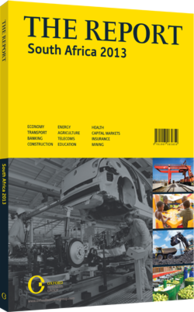OBG talks to Alan Olivier, CEO, Grindrod

Interview: Alan Olivier
To what extent do you think freight flow can be used as a barometer for economic activity?
ALAN OLIVIER: Freight movement typically serves as a strong indicator of what is going on in the local and global economies, but for many commodities the drivers behind flows are not always clear. Bulk minerals are quite price-sensitive and the grades of commodities have a big impact on where they are sourced from. For example, China is the world’s biggest consumer of iron ore and has significant low-grade iron ore resources. However, international prices will influence whether industry decides to import higher-grade iron ore or use the indigenous low-grade ore supplies.
Therefore, over a period in which Chinese iron ore consumption grows by 3-4%, its seaborne imports might rise by 15%. This is driven by swings in shipping and commodity costs and is not necessarily a reflection of supply, demand or relative competitiveness.
Is South Africa’s export infrastructure competitive?
OLIVIER: Infrastructure and transportation are major economic enablers. No one will invest in a new mine or manufacturing facility without first being assured that the required logistics are in place. Our infrastructure is very strong compared to several African countries that produce similar commodities and whose logistics infrastructure is yet to be built. The cost of building from scratch is higher than upgrading existing infrastructure, so we are in a very competitive position.
However, we need to drive further efficiency and ensure we remain competitive by investing in expansion and upgrades. While we have good ports, they are being choked in terms of utilisation, and lack the capacity to ramp up volumes. Our port and rail tariffs are very expensive. Delays are also costly, and you often have ships waiting for extended periods to access ports.
We went through a decade of very strong economic growth and demand for commodities, but right through that period we grew into infrastructure that existed, rather than building new infrastructure. In the meantime, other countries have invested significantly in new projects and we run the risk of being left behind.
What scope is there for the private sector to contribute towards new infrastructure?
OLIVIER: Transnet has improved its efficiency dramatically, but we are coming to the point where we cannot get any more capacity out of efficiency and need new infrastructure. The government has done an excellent job of identifying and planning the infrastructure and main corridors that should be developed. The concern is whether it has the budget and resources to deliver on all these projects in a short period.
There is no doubt that the private sector could contribute to the development of infrastructure in South Africa. We have tried over the past few years to enter into public-private partnerships, but have not been successful. Projects were identified, discussions took place and terms were agreed to, but we never managed to get the final sign-off. South Africa is part of the global economy. When firms are tendering for business, they need decisions to be made quickly, they need certainty and they need to be price competitive; if this is not the case, they will invest or source from elsewhere.
How could South Africa go about bolstering its commercial shipping industry?
OLIVIER: South Africa has long talked about introducing a tonnage tax and creating a tax environment that is similar to major shipping markets like the Netherlands and Singapore. Yet nothing has materialised and it is not surprising that ships serving the country are registered elsewhere and do not fly the South African flag.
The issue of flagging and tonnage tax is very complex, as there are significantly more implications for ship owners than just the rate of taxation. There are already many jurisdictions that offer similar and competitive tonnage tax rates, personal tax rates and other related benefits. In order to be competitive, South Africa would need to match these terms at the very least.
You have reached the limit of premium articles you can view for free.
Choose from the options below to purchase print or digital editions of our Reports. You can also purchase a website subscription giving you unlimited access to all of our Reports online for 12 months.
If you have already purchased this Report or have a website subscription, please login to continue.

